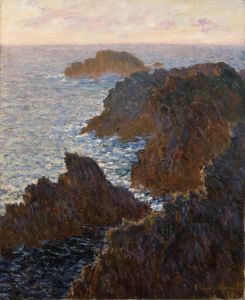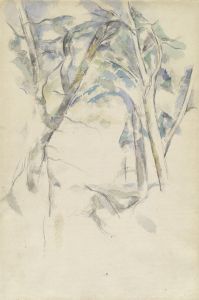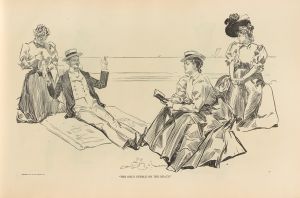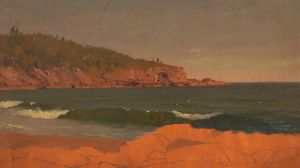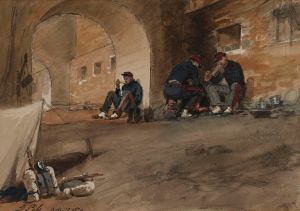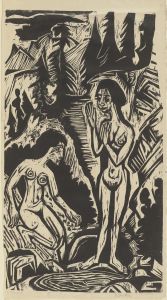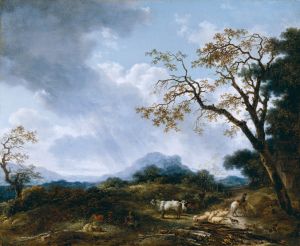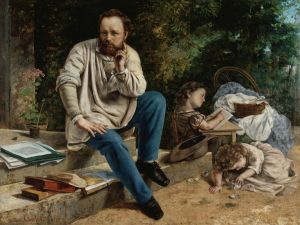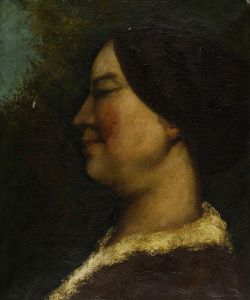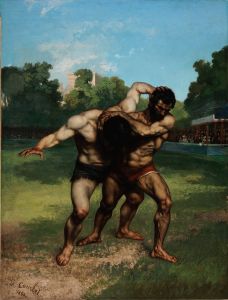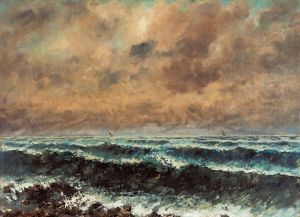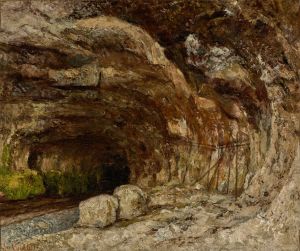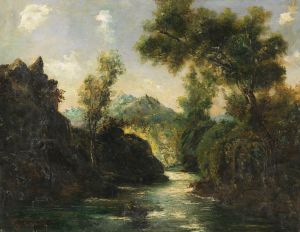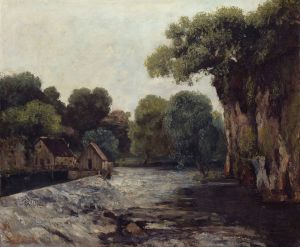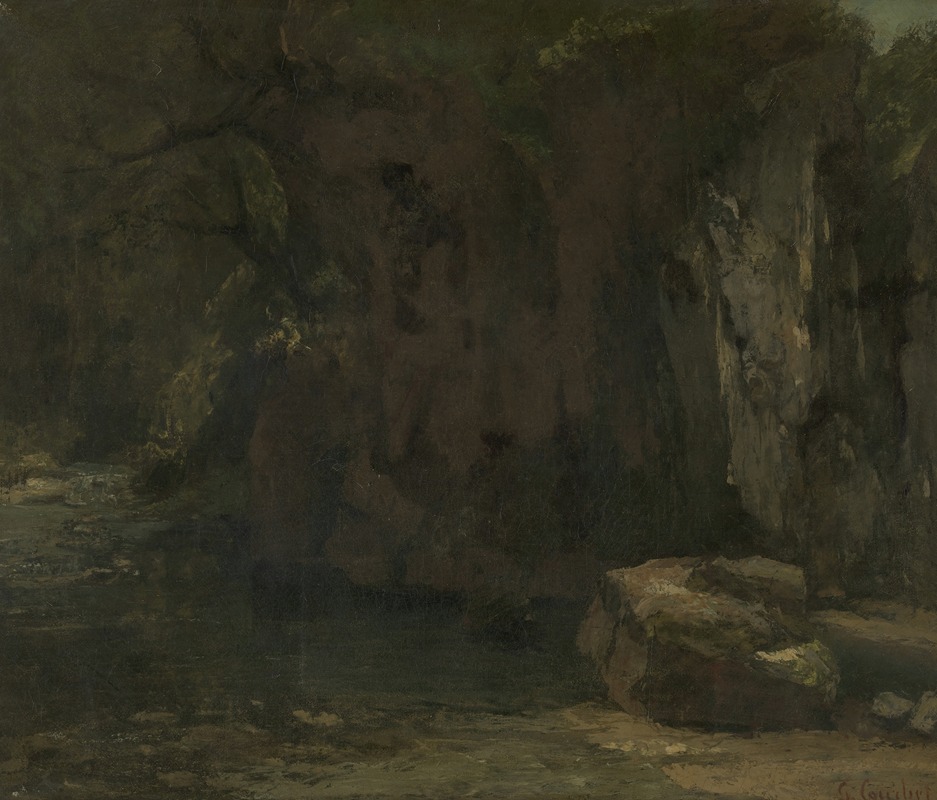
The Cliffs of the Loue
A hand-painted replica of Gustave Courbet’s masterpiece The Cliffs of the Loue, meticulously crafted by professional artists to capture the true essence of the original. Each piece is created with museum-quality canvas and rare mineral pigments, carefully painted by experienced artists with delicate brushstrokes and rich, layered colors to perfectly recreate the texture of the original artwork. Unlike machine-printed reproductions, this hand-painted version brings the painting to life, infused with the artist’s emotions and skill in every stroke. Whether for personal collection or home decoration, it instantly elevates the artistic atmosphere of any space.
Gustave Courbet's "The Cliffs of the Loue" is a notable work by the French painter, who was a leading figure in the Realism movement of the 19th century. Courbet, born in 1819 in Ornans, France, was known for his commitment to painting realistic scenes of everyday life and landscapes, often drawing inspiration from his native region of Franche-Comté.
"The Cliffs of the Loue" is one of Courbet's many landscape paintings that capture the natural beauty of the Loue River, which flows through the Jura Mountains in eastern France. This area was particularly significant to Courbet, as it was close to his hometown and provided a wealth of inspiration for his work. The Loue River and its surrounding landscapes appear in numerous paintings by Courbet, reflecting his deep connection to the region and his desire to depict its rugged beauty with authenticity and precision.
In this painting, Courbet employs his characteristic style, marked by a robust use of color and texture, to render the cliffs with a sense of solidity and grandeur. The composition typically features the steep, rocky cliffs rising dramatically from the river, capturing the interplay of light and shadow on the stone surfaces. Courbet's technique often involved the use of a palette knife, which allowed him to apply thick layers of paint, creating a tactile quality that enhances the realism of the scene.
Courbet's landscapes, including "The Cliffs of the Loue," are celebrated for their departure from the idealized depictions of nature that were prevalent in the art of his time. Instead of romanticizing the landscape, Courbet focused on its raw and unembellished aspects, presenting nature as it appeared to him. This approach was part of a broader movement in art that sought to portray subjects truthfully, without the influence of artistic conventions or societal expectations.
The painting is also significant within the context of Courbet's career and the development of Realism. By choosing to paint the landscapes of his native region, Courbet was making a statement about the importance of personal experience and observation in art. His work challenged the academic norms of the day, which often prioritized historical and mythological subjects over scenes from everyday life and nature.
"The Cliffs of the Loue" exemplifies Courbet's dedication to capturing the essence of the natural world, and it stands as a testament to his skill as a landscape painter. The painting, like many of Courbet's works, invites viewers to appreciate the beauty and power of nature, encouraging a deeper connection to the environment.
Courbet's influence on the art world extended beyond his lifetime, as his commitment to realism and his innovative techniques paved the way for future generations of artists. His landscapes, including "The Cliffs of the Loue," continue to be studied and admired for their contribution to the evolution of modern art.
While specific details about the creation and exhibition history of "The Cliffs of the Loue" may not be extensively documented, the painting remains an important part of Courbet's oeuvre and a reflection of his artistic philosophy. Courbet's work, including this painting, can be found in various museums and collections, where it continues to inspire and engage audiences with its vivid portrayal of the natural world.





